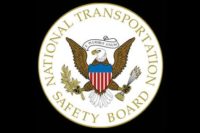An NTSB Safety Compass blog post
Most Wanted List progress report: Rail safety

The National Transportation Safety Board (NTSB) is releasing a series of blogs highlighting the progress the transportation community is making in each mode to advance issues on our 2017–2018 Most Wanted List. This series sheds light on the progress made and what needs to be done going forward to improve transportation safety. This is the fourth and final blog of the series. Click here to visit the NTSB's Safety Compass blog.
On November 14, 2017, the day before our Most Wanted List (MWL) progress meeting, we concluded our investigation into the April 2016 Amtrak train derailment in Chester, Pennsylvania. As I offer the closing words of this blog series highlighting the progress made to address issues on our list, the NTSB is presently investigating the December 2017 Amtrak train derailment in DuPont, Washington, and the February 2018 Amtrak train and CSX freight train collision near Cayce, South Carolina. And, on February 15, I testified before the US Congress regarding the urgency for the industry to fully implement positive train control (PTC) by year’s end. That same day, we also issued three urgent safety recommendations to address findings from our investigations into the Cayce accident and the June 2017 Long Island Rail Road accident in Queens Village, New York.
At our midpoint meeting, I joined members from our Office of Rail, Pipeline, and Hazardous Materials Investigations to lead a discussion on rail safety. While there has been progress with implementing some of the NTSB’s recommendations, the Chester and DuPont derailments and the Cayce collision tragically illustrate that more needs to be done – and quickly.
A deficient safety management system and impairment were factors in the fatal Chester accident. And, like many accidents we’ve investigated, distraction played a role. When the accident occurred, the dispatcher was speaking to his spouse on a landline. We’ve recommended that Amtrak prohibit such calls while dispatchers are on duty and responsible for safe train operations.
The Chester accident also illustrated the fact that drug use by rail workers has been on the rise in recent years, playing a part in seven accidents in the last 3 years and nine accidents in the last decade, compared to only one accident in the prior decade. In the Chester accident, a backhoe operator who was killed had cocaine in his system, and two different opioids were discovered in the track supervisor’s system. During our investigation, the Federal Railroad Administration (FRA) moved quickly to require random urine drug screening for maintenance‑of‑way workers, effective April 2018. Additionally, the Amtrak locomotive engineer tested positive for marijuana, although there was no operational evidence that his prior drug use impaired his performance on the morning of the accident. What it did show, however, is that despite DOT random drug testing requirements for locomotive engineers, such a program did not deter his use of an illicit drug.
Fatigue and medical fitness are other significant MWL issues for rail, and we’re disappointed that the FRA and the Federal Motor Carrier Safety Administration have withdrawn an advanced notice of proposed rulemaking that would’ve supported sleep apnea screening for railroads and for commercial highway carriers. Clearly, there’s still important work to do on these issues.
Regarding another significant MWL issue for rail, strengthen occupant protection, the FRA has made progress toward developing a performance standard for keeping window glazing in place during an accident. Unfortunately, meaningful improvements related to the safety of corner posts, door designs, restraint systems, and locomotive cab crashworthiness have been slow.
The MWL’s safe transport of hazardous materials issue area focuses on transporting energy products in safer tank cars, built to the DOT-117 rather than DOT-111 and CPC 1232 standards. We are pleased to see that the more robust DOT-117 standard is being used for transport of crude oil. Ethanol transport, however, still widely relies on the DOT-111 and CPC 1232 standards. We urge stakeholders to move to using the DOT-117 standard when carrying ethanol as soon as possible, ahead of the mandated deadlines.
There has been little, if any, progress to improve transit safety oversight since we released the current MWL. To exercise effective oversight, the Federal Transit Administration (FTA) must continue to use the authority it gained with the Fixing America’s Surface Transportation Act and Moving Ahead for Progress in the 21stCentury Act to promulgate safety rules.
Finally, on the issue of expanding recorder use, the industry is moving forward with installing inward-facing video cameras on passenger trains, which is a step in the right direction. However, we would like to see the FRA move forward on requiring the installation and that the requirement be expanded to include audio recording, and we believe that the freight rule should follow suit. The FTA still has no such requirements for transit rail.
As I offer the last thoughts on our MWL midpoint meeting blog series, I want to thank all those who attended for taking the time to offer suggestions and share their perspectives on the issues affecting the safety of our nation’s transportation system. As we move into the second year of this MWL cycle, I challenge our stakeholders to target one or more recommendations on which they can make measurable progress before this year is over. We all want to have the safest transportation in the world, and it will take us working together to accomplish it.
Looking for a reprint of this article?
From high-res PDFs to custom plaques, order your copy today!




